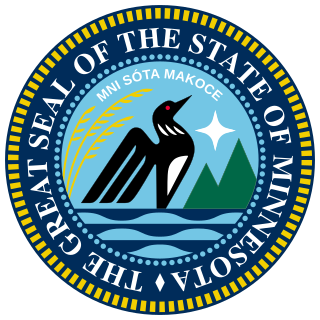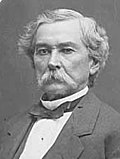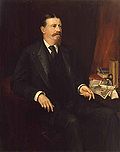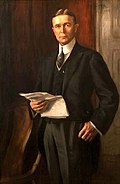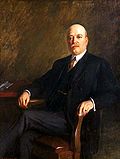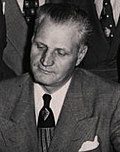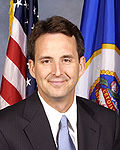Top Qs
Timeline
Chat
Perspective
List of governors of Minnesota
From Wikipedia, the free encyclopedia
Remove ads
The governor of Minnesota is the head of government of the U.S. state of Minnesota. The governor is the head of the executive branch of Minnesota's state government and is charged with enforcing state laws.

There have been 41 governors of the state; one, Rudy Perpich, served non-consecutive terms. Minnesota Territory had three governors appointed by the president of the United States; the first, Alexander Ramsey, would later be state governor.
The current governor is Tim Walz, a member of the Democratic-Farmer-Labor Party, who took office on January 7, 2019.
Remove ads
List of governors
Summarize
Perspective
Minnesota Territory
Minnesota Territory was organized on March 3, 1849.[1]
State of Minnesota
Minnesota was admitted to the Union on May 11, 1858.[19]
The Minnesota Constitution of 1858 created the offices of governor and lieutenant governor, elected separately to two-year terms; these were lengthened to four years starting in 1963. As of 1974, the governor and lieutenant governor are elected on the same ticket.[20]
Remove ads
See also
Notes
- The range given is from the date the governor was confirmed by the Senate, or appointed by the President during a Senate recess, to the date the governor left office.
- Edward W. McGaughey was nominated on March 15, 1849,[5] but was rejected by the Senate on March 19.[6] William Pennington was then nominated on March 21,[7] and confirmed by the Senate on March 22,[8] but declined the post.[2] Ramsey was appointed on April 2,[2] during a Senate recess; nominated on December 21,[9] and confirmed by the Senate on January 9, 1850.[10] He arrived in the territory on May 27, 1849.[2]
- Lieutenant governors represented the same party as their governor unless noted.
- Ramsey resigned, having been elected to the United States Senate.[3]
- Nelson resigned, having been elected to the United States Senate.[66]
- Lind was also endorsed by the Populist Party.[78]
- Represented the Republican Party.
- Eberhart lost the Republican nomination to William E. Lee.[91]
- Stassen resigned to serve in the United States Naval Reserve.[120]
- Thye was instead elected to the United States Senate.[124]
- Youngdahl resigned, having been confirmed to the United States District Court for the District of Columbia.[128]
- Represented the Democratic–Farmer–Labor Party.
- Anderson resigned so that his successor would appoint him to the United States Senate.[152]
- Ventura was elected as representing the Reform Party of Minnesota.[168] The party disaffiliated from its national party and resumed using its previous name, the Independence Party of Minnesota, on March 4, 2000. Ventura had himself disaffiliated from the national party on February 11.[170]
- Walz's second term began on January 2, 2023,[179] and will expire on January 4, 2027.
Remove ads
References
External links
Wikiwand - on
Seamless Wikipedia browsing. On steroids.
Remove ads
